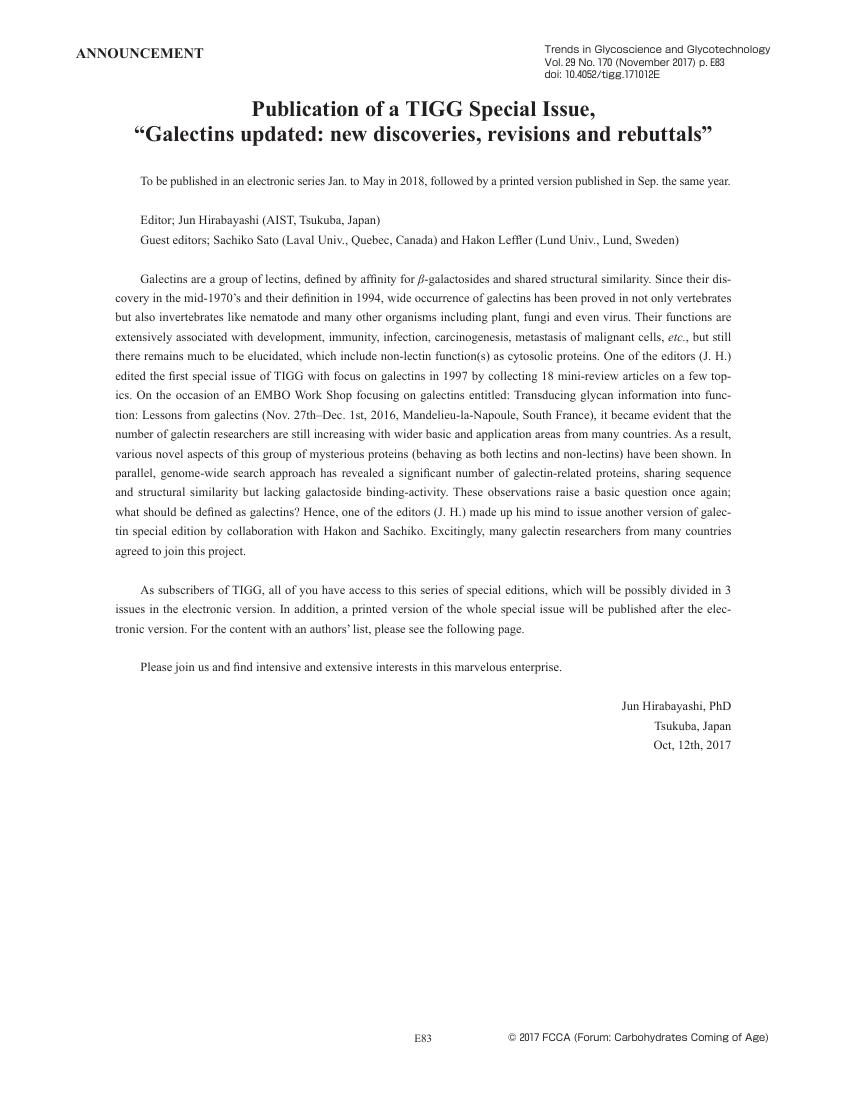4 0 0 0 OA Human Milk Oligosaccharides as Essential Tools for Basic and Application Studies on Galectins
- 著者
- Tadasu Urashima Jun Hirabayashi Sachiko Sato Akira Kobata
- 出版者
- FCCA(Forum: Carbohydrates Coming of Age)
- 雑誌
- Trends in Glycoscience and Glycotechnology (ISSN:09157352)
- 巻号頁・発行日
- vol.30, no.172, pp.SE51-SE65, 2018-01-25 (Released:2018-01-25)
- 参考文献数
- 107
- 被引用文献数
- 108
It is now recognized that human milk oligosaccharides (HMOs) can function both as prebiotics and as decoy receptors that inhibit the attachment of pathogenic microorganisms to the colonic mucosa. They can also act as immune modulators and as colonic maturation stimulators in breast-fed infants. These functions could be mediated by biological interaction between a variety of HMOs and lectins including galectins, selectins and siglecs. There are more than 100 HMOs; they have structural units such as H type 1: Fucα1-2Galβ1-3GlcNAc, Lewis a: Galβ1-3(Fucα1-4)GlcNAc, Lewis b: Fucα1-2Galβ1-3(Fucα1-4)GlcNAc, Lewis x: Galβ1-4(Fucα1-3)GlcNAc, sialyl Lewis a: Neu5Acα2-3Galβ1-3(Fucα1-4)GlcNAc, and sialyl Lewis x: Neu5Acα2-3Galβ1-4(Fucα1-3)GlcNAc. It can be expected that these units may be utilized as tools for studies on the sugar-binding specificities of lectins including galectins, monoclonal antibodies, virus capsid proteins and bacterial toxins. This mini-review presents the dataset of comprehensive HMO structures, including recently clarified ones, in tabular form, for its utilization in such studies, including those of carbohydrate-binding specificity of galectins. In addition, this review introduces recent in vivo and clinical studies, which may be relevant to the biological functions and future utilization of HMOs.
3 0 0 0 OA Publication of a TIGG Special Issue, “Galectins updated: new discoveries, revisions and rebuttals”
- 著者
- Jun Hirabayashi
- 出版者
- FCCA(Forum: Carbohydrates Coming of Age)
- 雑誌
- Trends in Glycoscience and Glycotechnology (ISSN:09157352)
- 巻号頁・発行日
- vol.29, no.170, pp.E83-E83, 2017-11-25 (Released:2017-11-25)
